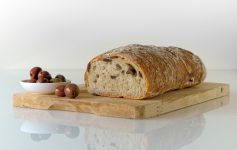This week on my homepage, I discussed how toxins such as chemicals, pesticides, dirty electricity, and stress, can trump our health. However, I also provided solutions on how to modulate this. There’s not enough time or space to go into other factors such as mercury and metals (see resources), but I do want to focus on mold.
Mold is a big player for most of my clients who have chronic immune deregulation and can perpetuate their inability to get well. In 2006, an article in Clinical Infectious Disease reported:
The epidemiology of invasive fungal infection is evolving. Yeasts other than Candida albicans and molds other than Aspergillus fumigatus have emerged as significant causes of invasive mycoses in severely immunocompromised patients. Although, in some instances, these changes may be related to medical interventions, such as the use of antifungal agents in prophylaxis, in the majority of cases, they seem to be a consequence of changes in the host, such as more-severe immunosuppression or different types of immunosuppression impacting both risk periods and the infections that occur (10).
Of concern, many people may not be aware that they have a mold issue because their home testing kit was “negative for it”. The fact is, unless one purchased a kit that tested the 600 species of mold and compared indoor and outdoor levels as done by a building biologist, this home testing was probably not accurate or sophisticated enough to find toxic mold growth. My rule-if you have water damage or you can see it, it’s a problem! And, you want to get it removed professionally or at least diffuse.
A few years ago, I had the pleasure of interviewing Jordan Hoffman, LAc, who is very experienced in this area. He reported that even if mold is cleaned up, mycotoxins can live on top of mold and still be released causing symptoms. Furthermore, I learned that milk holds mold (pasteurization does not kill mycotoxins). This interview opened my eyes to look for “red flags” of symptoms of mold exposure such as symptoms worsening at night, waxing and waning with seasons or flooding, chronic inflammation, sinusitis, headaches, and itchy skin (11).
Psychological and cognitive issues are also very common with mold exposure. These include psychosis, depression, and bi-polar disorder. Furthermore, some studies even report that the changes in brain from mold exposure are similar to those negative effects experienced by those with traumatic brain injury (TBI) (12-15). This is due to the role of mycotoxins increasing inflammatory signals called cytokines that can cross the blood-brain barrier and cause “leaky brain” (15).
Richie Shoemaker is the well-known-go-to expert on toxic mold and has a whole website devoted to it: http://www.survivingmold.com/.
His treatments are based on testing for various factors impacted by biotoxins which include markers of immune response that are listed below:
- T regulatory cell deficiency (CD4+CD25+)
- TH17
- Split products of complement activation to determine immune activation (C4a/C3a)
- Transforming growth factor beta 1 (TGF beta 1)
- Melanocyte-stimulating hormone (MSH)
- Vasoactive intestinal polypeptide (VIP)
- Matrix metallopeptidase 9 (MMP9)
- Vascular endothelial growth factor (VEGF)
There is also a screening tool called the visual contrast sensitivity test (VCS). According to chronicnuerotoxins.com:
“A positive VCS test, in the presence of biotoxin exposure potential, and a symptom complex involving multiple systems, and in the absence of other historical, medical or treatment conditions that likely explain the symptoms, provide a basis for making a diagnosis of Probable Biotoxin-Mediated Illness.”
Dr. Shoemaker uses the drug cholestyramine to bind the toxins and help prevent their recirculation into the system via the liver and bile. Dr. Shoemaker also recommends removing gluten whenever autoimmunity is identified (elevated TGF beta 1 with low CD4+CD25+ cells) because these factors increase production of antibodies to gliadin and other markers (16-18).
To me, mold and chronic infections are an example of overgrowth. Many practitioners don’t understand
the difference between an infection and overgrowth. Whereas an infection occurs from a pathogen not normally in the body, overgrowths occur due to a body’s inability to maintain balance between human cells and the bacterial and fungal cells that live within it (19).
In my viewpoint, this is why one cannot rely on just killing the organism or treating the symptoms if mold is present. This would be ignoring the environment of one’s terrain that allowed the immune dysregulation to flourish in the first place.
For this reason, I recommend that all my clients begin diffusing essential oils in the home as soon as they can. This oil blend has oils that have been shown to inhibit toxic mold species (20-23).
In fact, in 2005, Edward Close, PhD, a mold remediation consultant, performed a third-party sampling for mold in an apartment complex that had been evacuated related to a flooding. The new buyer had hired an expert to remediate it using a hospital disinfectant; however, Dr. Close’s sampling from that treatment showed mold was still present. When Dr. Close diffused an essential oils blend under the same controlled conditions, he had amazing results.
There were 10,667 stachybotrys mold (a form of toxic mold) spores identified in a per cubic meter area and after diffusing a blend of essential oils for 48 hours, Dr. Close found only thirteen stachybotrys remaining. In a sample of sheetrock of 75,000 stachybotrys mold spores and after 72 hours of diffusing, no stachybotrys mold spores remained. Furthermore, the mold did not re-establish itself because the oils continued to work for hours after diffusing (23).
As mentioned, diffusing this oil blend or biological remediation done properly doesn’t mean your mold woes are cured. Once the stressor is mitigated, it’s time to rebuild the immune system step-by-step in an integrated fashion. Most of my clients are put on a functional medicine “4 R program” that includes:
1. Removing the trigger (mold, bugs, and parasites) with environmental and natural antimicrobial support, or referral to specialist if needed.
2. Replacing enzymatic support to assist with digestion, assimilation, and promote the ability to absorb
nutrients for healing. Enzymes also prevent re-infestation and immune stimulation from undigested proteins in foods that can ferment in the gut as a result of a compromised and tired system.
3. Re-inoculating with healthy bacterial species found in the gut to favorably modulate the immune response. I recommend strains that are specific for my clients’ needs, as everyone has a different genetic microbiome blueprint. Furthermore, a healthy diet high in fiber and veggies are encouraged to feed the bugs to build a home in our gut.
4. Repairing and rejuvenating the gastrointestinal lining with herbals and nutrients.
By addressing both environmental exposure and modulating the terrain it effected, one has a better chance of getting and staying well.
References:
Please see my homepage blog
Resources in this blog:
Building Biologist information and checklist for mold: http://www.buildingbiology.com.au/index.php/Biology/Get-Your-House-Tested-/-Do-It-Yourself.htm
Jordan Hoffman interview (80 min): http://jordanhoffmanacupuncture.com/articles/CR_021512.mp3
Link to gluten, inflammation, and brain cytokines: http://www.allthingshealing.com/Naturopathy/Whats-the-Deal-with-Gluten-Free/5352#.U9AjzrFCzKQ
Biological dentistry, what your doctor doesn’t know may hurt you: http://dr-lobisco.com/what-your-dentist-wont-tell-you-about-root-canals/


